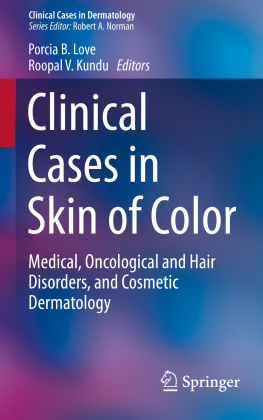Introduction
Immunity and diabetes is a complicated subject and many skin-related problems may be involved. There are five dermatologic conditions related to immunity and diabetes that need special note. The five conditions are the diabetic foot, mucormycosis, necrotizing fasciitis, candidiasis, and recurrent cellulitis of the lower extremities. These illnesses seem uniquely associated with diabetic immune dysregulation.
Diabetes mellitus is a metabolic disease characterized by chronically elevated blood glucose levels, known as hyperglycemia. The hyperglycemic state in diabetes is due to defects in secretion or action of insulin, or more commonly, both. Diabetes affects millions of people worldwide. In the U.S. an estimated 26 million people are affected. The International Diabetes Federation Atlas reports that the prevalence of diabetes in the year 2012 was 8.3 % for all ages. That means that in 2012, 371 million people were living with diabetes worldwide. In 2030 it will be about 552 million. In many poor countries in Africa and in South East Asia, diabetes is undiagnosed in about half of the population.
Although there are many forms of diabetes mellitus, the majority of cases can be assigned to type I or type II diabetes. Approximately 8090 % of patients have type II diabetes and about 10 % have type I diabetes.
Type I diabetes is characterized in patients by an absolute lack of insulin since the pancreatic beta cells have been destroyed by mainly T lymphocytes. Normally these pancreatic beta cells, in the islet of Langerhans, secrete insulin but in type I diabetes the islet are under attack by mainly T lymphocytes. As type I diabetes is an autoimmune disease, it is also related to other autoimmune diseases such as thyroid disease, Addisons disease, and celiac disease. Type I diabetes usually develops in childhood and is progressive with the age.
Type II diabetes is caused by insulin resistance or dysfunction of the pancreatic beta cells which results in reduction of insulin secretion (relative insulin deficiency). Normal glucose uptake, metabolism, and storage are affected. These progressive and irreversible changes in the glucose homeostasis are due to insulin resistance. The dysfunction of pancreatic beta cells is their failure to adapt to increased insulin demands caused by long-term insulin resistance and hypersecretion of insulin. The four key risk factors for type II diabetes are obesity, increasing age, ethnicity, and family history.
Diabetes mellitus does not leave any organ of the body unaffected. It is a major cause of mortality and morbidity from long-term complications including cardiovascular diseases, renal failure, stroke, blindness, and amputations. Since this metabolic dysregulation is associated with secondary damages to all our essential organ systems, it is not surprising that diabetes type I and type II also affect the skin. The incidence and severity of many skin disorders are increased in patients with diabetes mellitus.
There are many studies which suggest that not only diabetes type I, but also type II, is a disease of the immune system. The immune system defends the body against various microbial, chemical, and physical injuries such as microorganisms and foreign substances to which we are constantly exposed. It comes in action when the natural barriers of the body fail. The skin and mucosa are examples of the mechanical barrier. The immune system has evolved into a complex and sophisticated system, consisting of a non-specific (congenital) bodys first-line defense innate immune system and a specific (acquired) adaptive immune system.
The innate immunity is the early and rapid pro-inflammatory immune response which was initially thought to be non-specific. But now it is known that the innate immune system has specificity that is directed against components of microorganisms, called pathogen-associated molecular patterns (PAMPs). The pattern recognition receptors (PRRs), for example toll-like receptors (TLRs), are host cellular receptors which recognize PAMPs. Endothelial cells, adipocytes, and macrophages identify threats via the PRRs and release pro-inflammatory cytokines like interleukin (IL)-6 and tumor necrosis factor (TNF)-. These cytokines, also known as inflammatory markers, stimulate production of acute phase proteins like C-reactive protein (CRP). Several inflammatory markers are increased in diabetes type II as well. As the diabetes continues, there is also an increase in acute phase proteins. Another evidence of the role of innate immune system in diabetes type II is that the characteristic diabetes dyslipidemia is an acute phase response to injury and illness. There are more than 20 studies which illustrate that increase of circulating concentrations of inflammatory markers, like CRP and IL-6, predicting the chance of developing diabetes type II.
Hundal et al. showed that a 2-week treatment of diabetes type II patients with aspirin will decrease the fasting blood-glucose level by about 25 % and CRP by 17 %. The insulin sensitivity was increased by 30 %. So there is a link between inflammatory and metabolic pathways in which anti-inflammatory drugs reduce high levels of blood-glucose and lower the inflammatory markers. For that reason there is possibly activation of the innate immune system in diabetes type II in which there is a chronic, cytokine mediated inflammation.
Now there is evidence that not only diabetes type I, but also in type II and metabolic syndrome, there is activation of the innate immune system. There is increasing evidence indicating that about 90 % of patients with diabetes type II, without having any evident immune mediated inflammatory disease, have innate immune system dysfunction. The associations between diabetes type II, insulin resistance, and innate immune system might be the result of the bodys response to chronic tissue injury that occurs in diabetes mellitus type II.
The etiological factors which lead to skin disorders in diabetes patients can be categorized into metabolic, infectious, vascular, neuropathic, or diabetes-associated disorders including necrobiosis lipoidica diabeticorum, diabetic bullae, and diabetic foot. Some of the skin disorders in diabetes patients can also be caused by the treatment of diabetes. Opportunistic infections caused by bacteria, fungi, viruses and protozoa are the most common skin disorders in immunocompromised patients.












